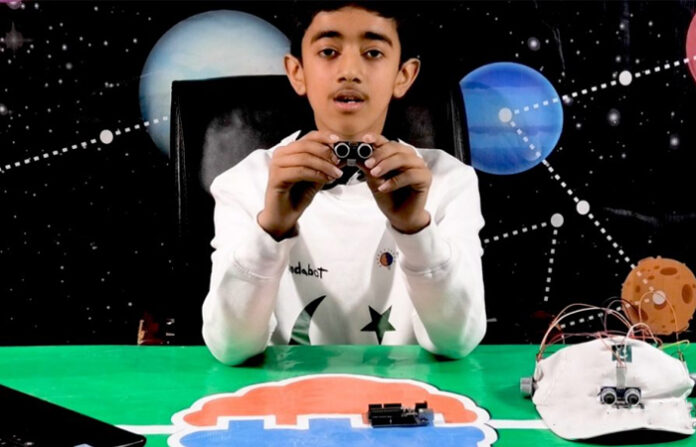A young scientist and fifth-grade student, Zohaib has created a system that helps blind people navigate and walk around comfortably without bumping into their environment. After completing the Arduino course from Stemers, he built the device as a project and named the device “Navigational Hat for Blind”.
Stemers is an organization active in providing school and college students throughout Pakistan with STEM education. For the young generation, they also have arts, management, and programming courses. Their aim is to grow our students into thought leaders that generate ideas and are able to take advantage of these ideas in order to generate viable business opportunities. In various fields, they have won multiple international competitions. Stemers has established the Guinness World Record in the field of Robotics in 2019.
Zohaib is one of their old students who learned from Stemers about Arduino and related technologies and created this exceptional system on the basis of this expertise.
For blind people, the Navigational Hat for Blind is intended to ease walking by using sound to signal when something is in their path. The hat is capable of distinguishing three dimensions of walls or barriers, i.e. front, left, and right. If something similar to the person wearing it is detected by the hat, depending on the side on which the object was detected, it makes a different tone. Blind people may therefore become used to its usage by identifying sounds and navigating their homes or offices in a matter of minutes.
To control these two machines, the hat utilizes ultrasonic sensors, an Arduino module, and a battery. All the equipment is firmly placed on the hat and can comfortably be worn on the head by anybody. The ultrasonic sensors act like the eyes and detect when something is in front and measure the distance it is detected at. The Arduino board is a programmable hardware system that, depending on the sensor transmitting the signal, determines which sound must be made.
As the device is set to run at a certain distance, this device may help blindly calibrate their movement. The technology has the potential, if commercially pursued, to dramatically improve the lives of blind people.


